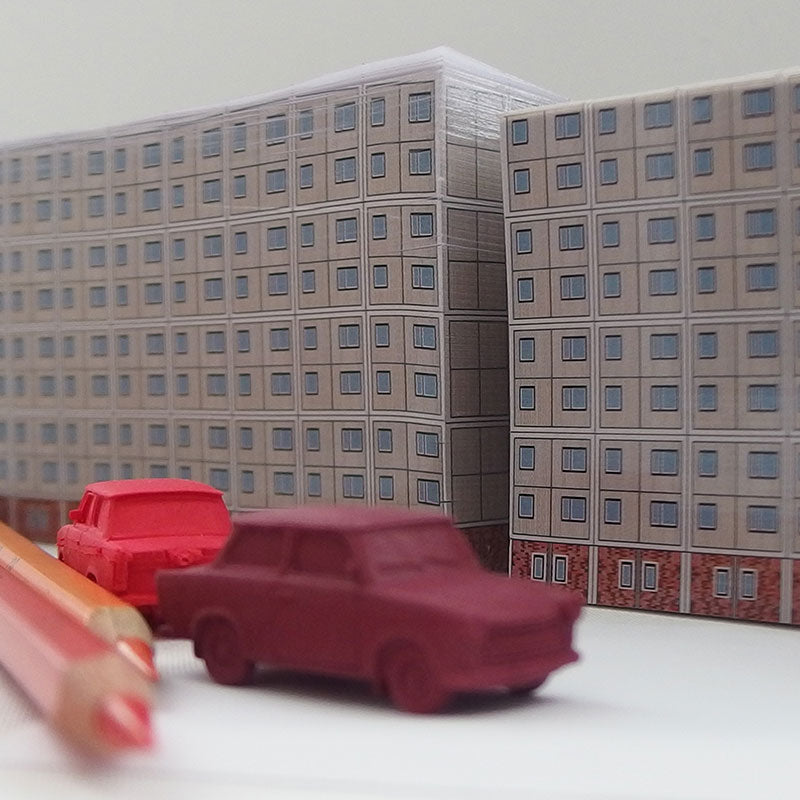
Notepad Eastern Bloc – heterogeneous instead of uniform
shares
Panel building notepad
"Berlin, you can be so ugly. So dirty and grey," sings Peter Fox in his Berlin anthem Schwarzzublau. The prefabricated building on Memhardstrasse, near Alexanderplatz, which inspired us to write this notepad (12 x 8 x 6 cm). does not correspond to the usual ideals of beauty. It has already been described as the "ugliest building in Berlin". Nevertheless, it is enjoying increasing popularity.

And one of Berlin's greatest qualities is that the city does not correspond to the usual notions of beauty. Because beauty is always in the eye of the beholder.
Prefabricated buildings - the architectural contemporary witnesses of the GDR - have already undergone several image changes. When they were still called new buildings, they were extremely popular. Warm water and central heating promised comfort and so the blocks of flats were popular across all educational levels.
That changed after reunification. Vacancies, alcohol, violence and Hartz IV characterize the image of the prefabricated buildings. The overweight, long-term unemployed “Cindy from Marzahn” in a pink jogging suit – an artificial character created by comedian Ilka Bessin is perhaps one of the most positive images associated with the prefab housing estates. Prefabricated buildings are seen as ugly, colorless, faceless and uniform.

But the image of the record begins to change again. On the one hand, this is due to population growth and the associated lack of affordable housing, and on the other hand to the location of the apartment blocks. They are either located in the urban center, as in the case of Memhardstrasse, or JWD, but are nice and green and quiet. In 2015, the British star architect David Chipperfiled said in an interview "Prefabricated buildings are ugly, but they are also interesting from a social point of view". This is because prefabricated buildings don't lend themselves well to gentrification – the substance simply doesn't make them suitable as luxury apartments. And so these uniform, socialist residential buildings become the preservers of heterogeneity in the inner cities. Who would have thought?
